iPhone 8 Plus vs Galaxy Note 8: Why Samsung Wins
The iPhone 8 Plus and Galaxy Note 8 are two of the most advanced smartphones ever, but Samsung’s phablet has the edge.
The Galaxy Note 8 has all the makings of the ultimate big-screen phone, with its gorgeous 6.3-inch screen, S Pen and new dual cameras. But the iPhone 8 Plus is a formidable phablet, too, offering Apple’s powerful new A11 Bionic processor, improved dual cameras and (finally) wireless charging.
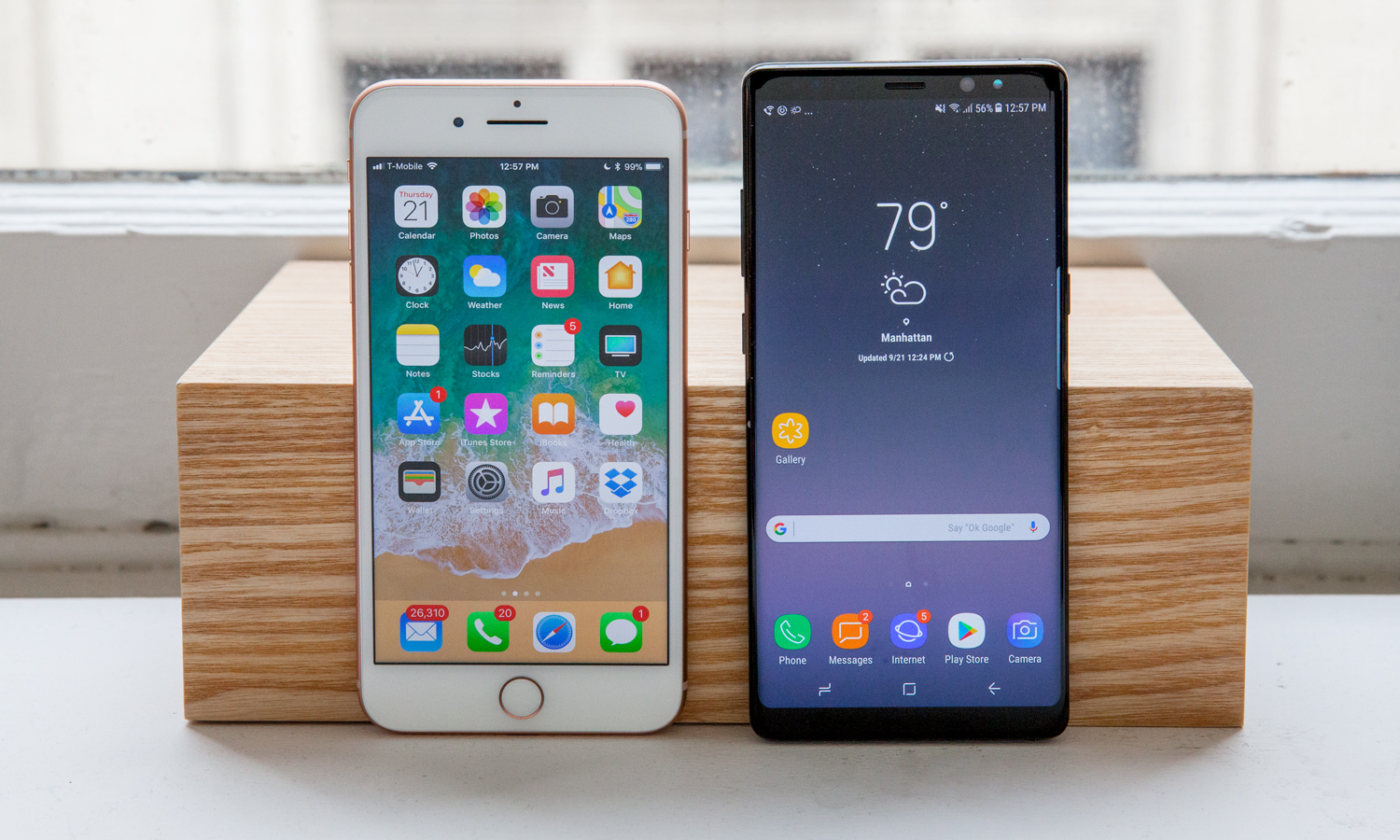
Starting at $930, the Note 8 is significantly more expensive than the $799 iPhone 8 Plus. But is the iPhone the better choice? We’re here to crown a winner.
Editors’ Note: The $999 iPhone X is coming soon, and we’ll be doing a separate face-off between that phone and the Note 8 when it arrives.
iPhone 8 Plus vs Note 8: Specs Compared
| Row 0 - Cell 0 | iPhone 8 Plus | Galaxy Note 8 |
| Price | $799, $949 | $930-$960 |
| CPU | A11 Bionic | Snapdragon 835 |
| RAM | 3GB* | 6GB |
| Storage | 64GB, 256GB | 64GB |
| microSD | None | up to 256GB |
| Display | 5.5 inches (1920 x 1080) LCD | 6.3 inches (2960 x 1440) OLED |
| Rear Cameras | Dual 12-MP cameras (wide angle: f/1.8; telephoto: f/2.8) | Dual 12-MP (wide angle: f/1.7; telephoto: f/2.4) |
| Front Camera | 7-MP (f/2.2) | 8-MP (f/1.7) |
| Video | 4K at 60 fps; slo-mo: 1080p at 240 fps | 4K at 30 fps; slo-mo: 720p at 240 fps |
| Battery Life | 11:16 | 11:11 |
| Dimensions | 6.2 x 3.1 x 0.3 inches | 6.4 x 2.9 x 0.34 inches |
| Weight | 7.13 ounces | 6.9 ounces |
*Not official: Based on reports
Design
This round is no contest. Just look at these two phones. While the iPhone is essentially a refreshed version of what came last year, complete with chunky bezels, the Note 8 is one of the sexiest phones you can buy. It’s Infinity Display stretches nearly edge to edge, and it curves as it meets the side.
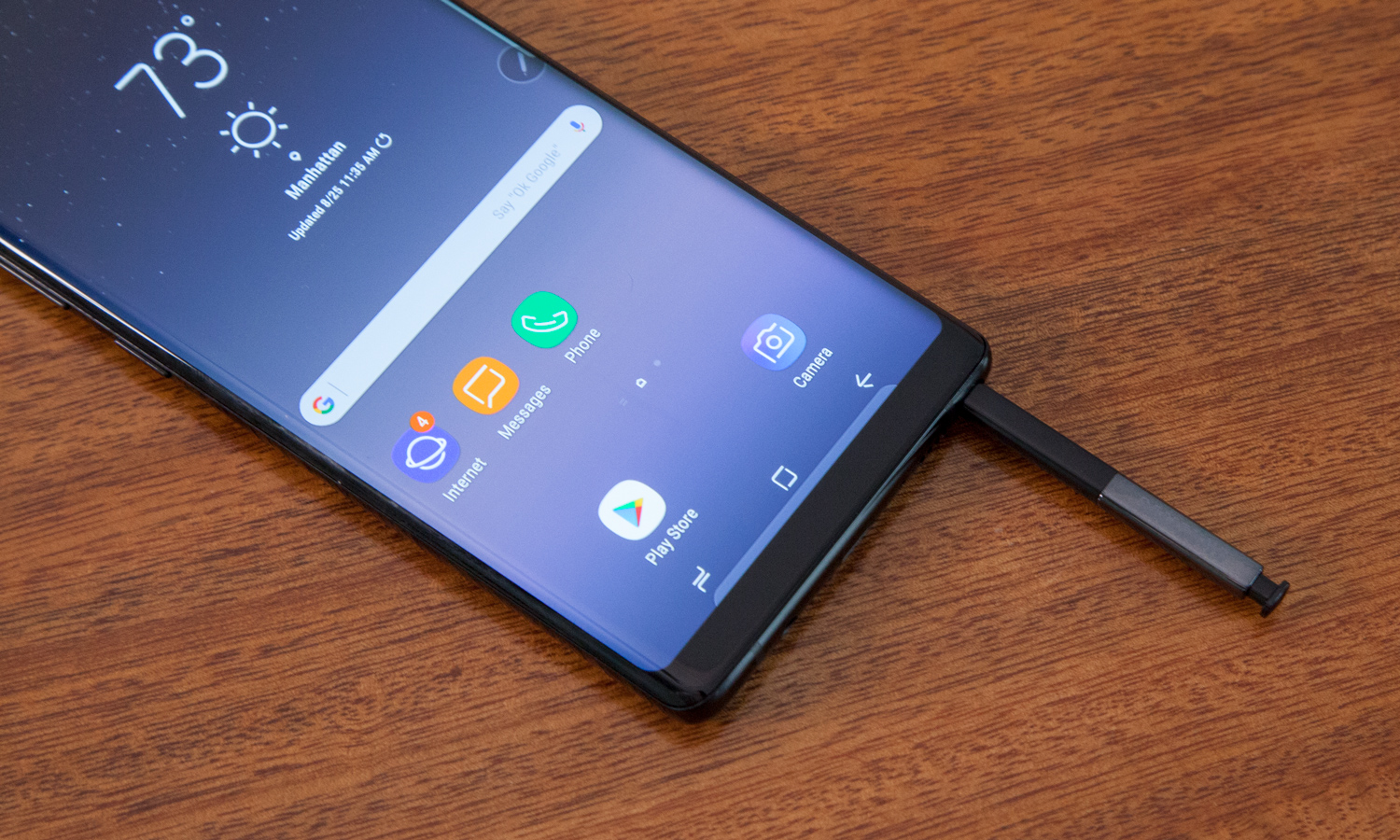
The iPhone 8 Plus is just a flat slab, but it is designed to be durable, as Apple claims that this is the most durable glass ever put on a phone. Both phones are water resistant, but the iPhone 8 Plus is noticeably wider and heavier (3.1 inches across and 7.13 ounces versus 2.9 inches and 6.9 ounces).
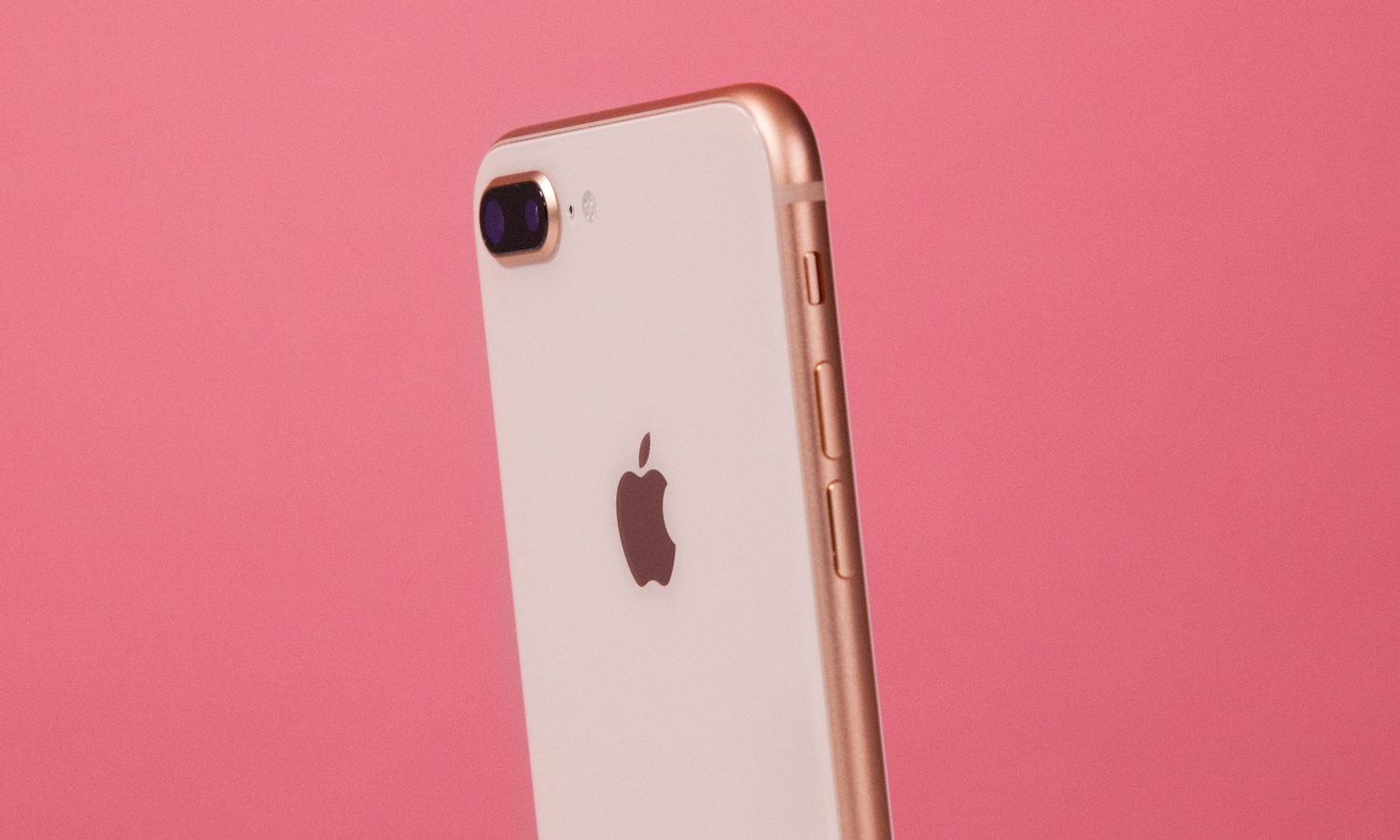
I do give Apple credit for offering three color options (Silver, Gold and Space Gray), while Samsung offers just two (Midnight Black and Orchid Gray).
Sign up to get the BEST of Tom's Guide direct to your inbox.
Get instant access to breaking news, the hottest reviews, great deals and helpful tips.
Winner: Galaxy Note 8
Display
There’s a reason Apple is moving to OLED for the iPhone X. Don’t get me wrong, the 1080p LCD screen on the iPhone 8 Plus is bright and fairly colorful, and it offers a wide color gamut. In addition, new True Tone technology automatically adjust the white balance of the screen to make reading easier on the eyes in various conditions.
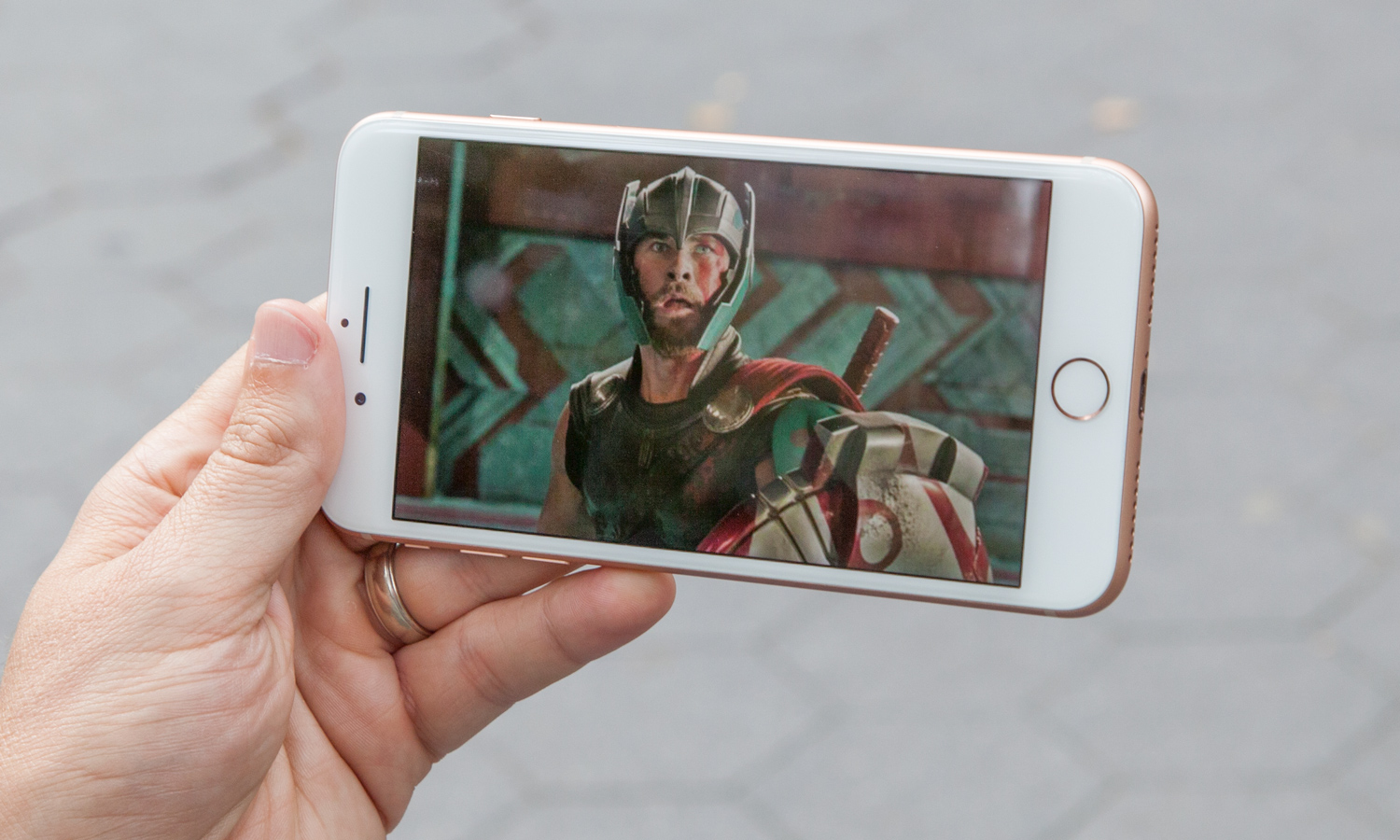
The Super AMOLED screen on the Note 8 is not just sharper (2960 x 1440), it renders more of the sRGB color gamut. We’re talking about the difference between 204 percent and 122.5 percent for the iPhone 8 Plus. The iPhone’s display was slightly more color accurate with a Delta-E rating of 0.25, compared to 0.5 for the Note 8, but both readings are great.
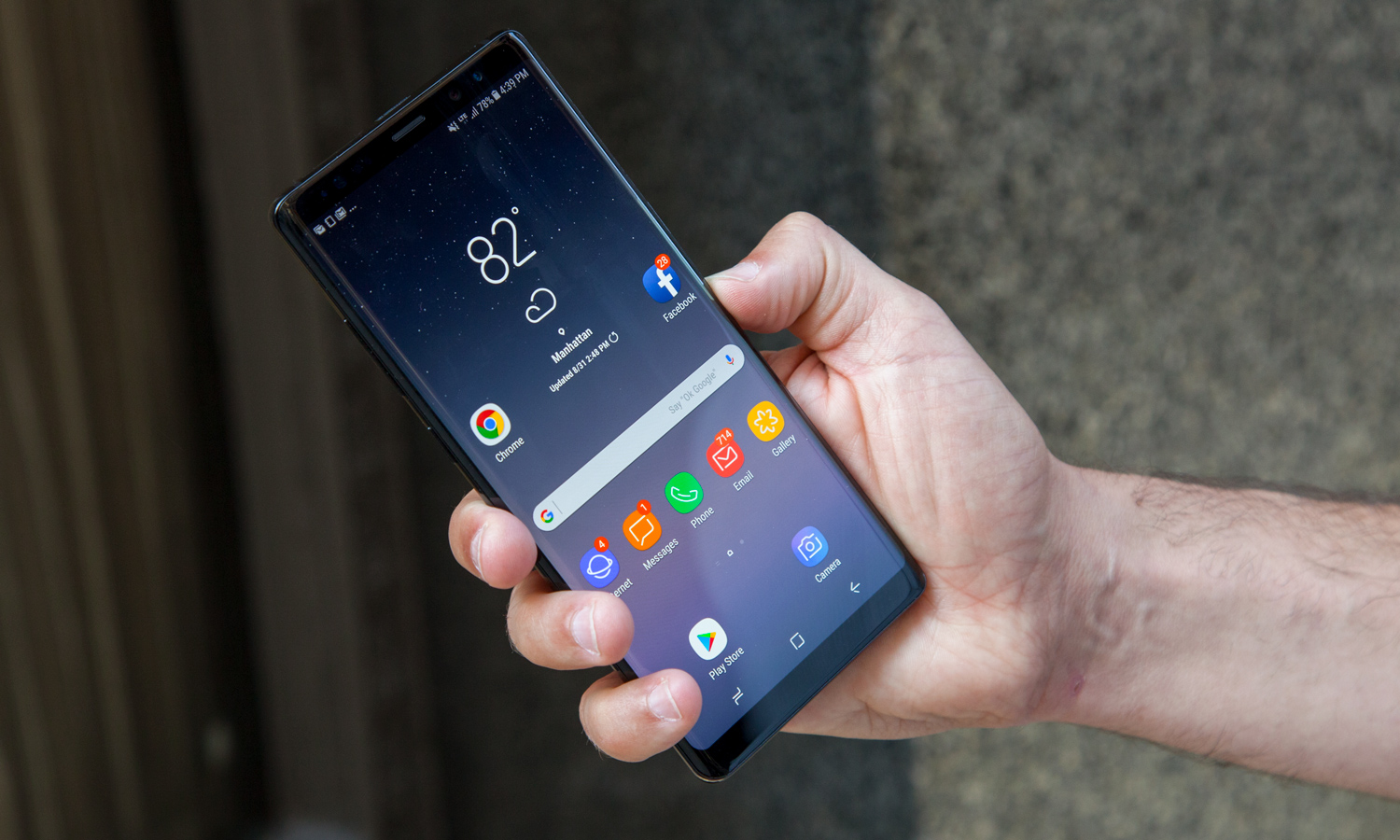
OLED has other advantages, too, such as deeper blacks and wider viewing angles.
Winner: Galaxy Note 8
Performance
The iPhone 8 Plus sprints past the Note 8 in this round, thanks to its new A11 Bionic processor. Thanks to this high-powered, 6-core chip, Apple’s handset trounced Samsung’s Snapdragon octa-core 835 chip in both synthetic benchmarks and a demanding real-world test.
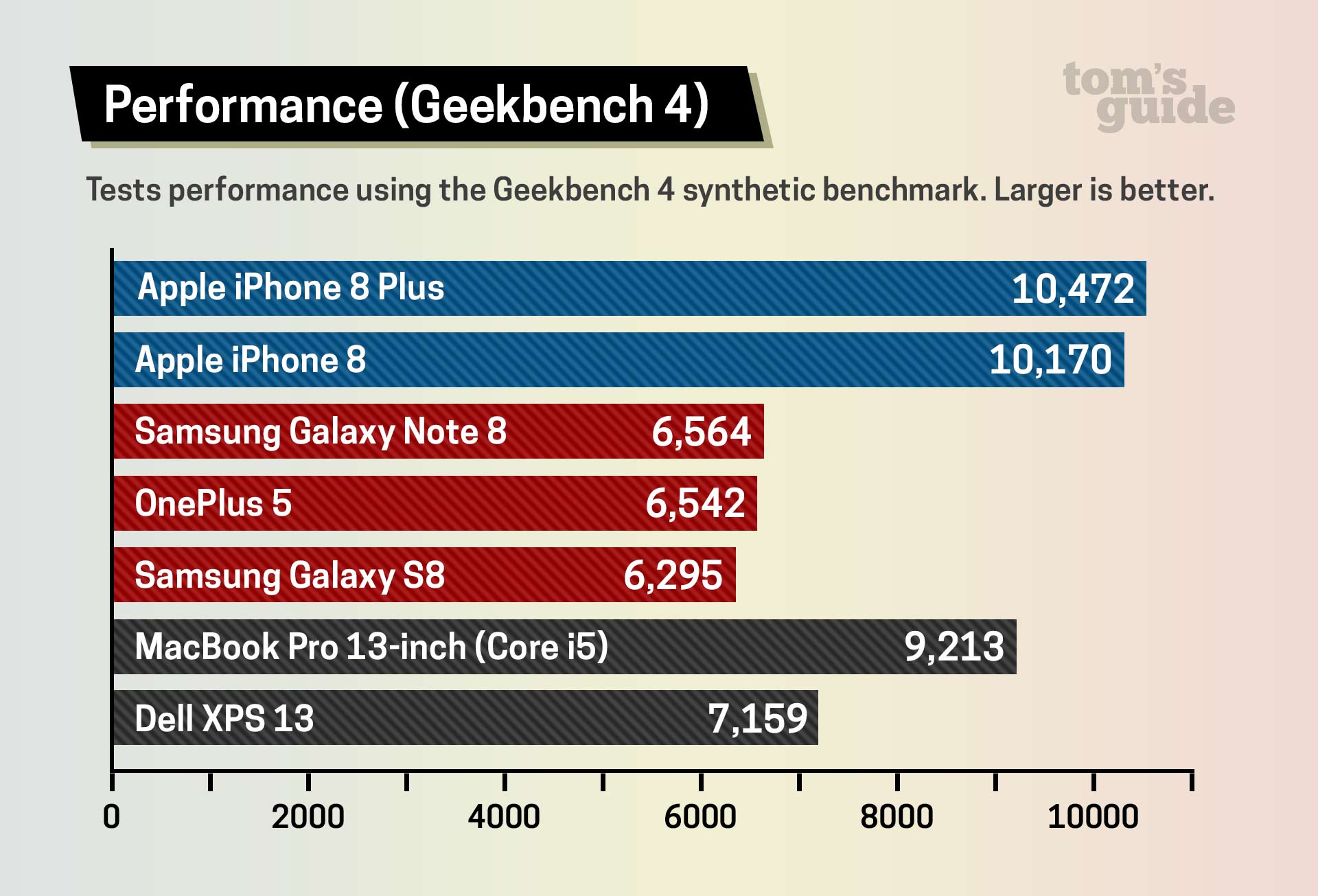
On Geekbench 4, which measures overall performance, the iPhone 8 scored 10,170, compared to the Note 8’s 6,564. It was a similar story on 3DMark Ice Storm Unlimited, which measures graphics might. The iPhone 8 Plus hit 64,412, blowing away the Note 8’s 39,834.
MORE: Best Smartphones on the Market Now
Last but not least, we exported a 2-minute 4K video with the same transitions and effects on the iPhone 8 Plus and Note 8. The iPhone took just 42 seconds, compared with just over 3 minutes for the Samsung.
Winner: iPhone 8 Plus
Cameras
We have a much more in-depth camera face-off for you to check out, but based on our comparisons it looks like the iPhone 8’s dual cameras outperform the Note 8’s. We observed better contrast and more vivid colors in the iPhone’s shots, while some images looking a bit washed out on the Note 8.
Nevertheless, the Note 8’s cameras are very fast and quite capable, capturing sharper images in some cases and more detail in shadows in other cases. In addition, the Note 8 lets you adjust the intensity of its blur effect for portraits (Samsung calls it Live Focus) both before and after you shoot. You can’t do that on the iPhone 8 Plus, but you can edit its Live Photos and add special effects to them in iOS 11.
Winner: iPhone 8 Plus
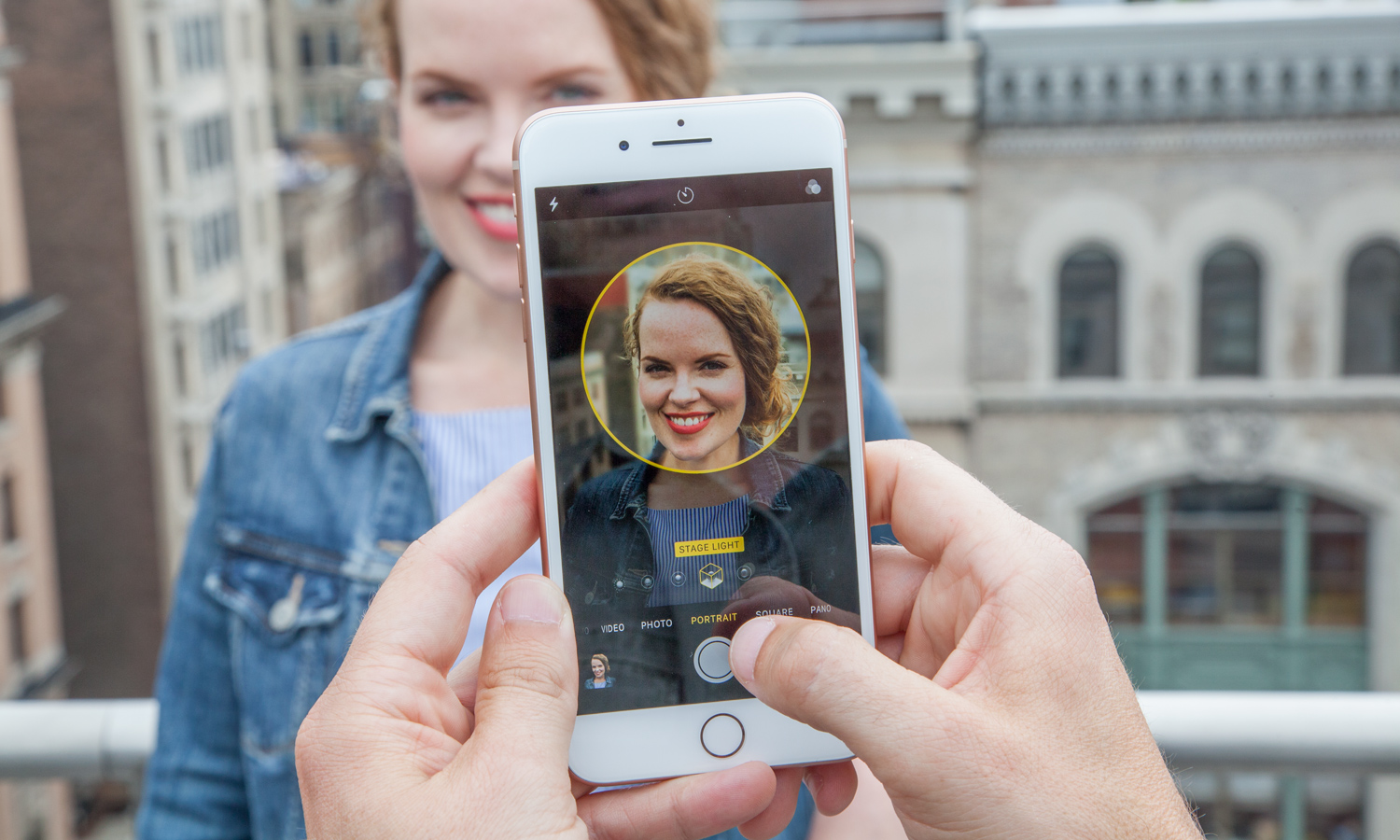
MORE: iPhone 8 Plus vs. Galaxy Note 8 Camera Face-Off: Apple Has the Edge
Special Features
Samsung is known for its special features, and the Note 8 is no exception. This phone features an S Pen that lets you take up to 100 pages of notes using a screen-off memo feature, and you can pin them to the always-on display (another feature the iPhone 8 Plus lacks).
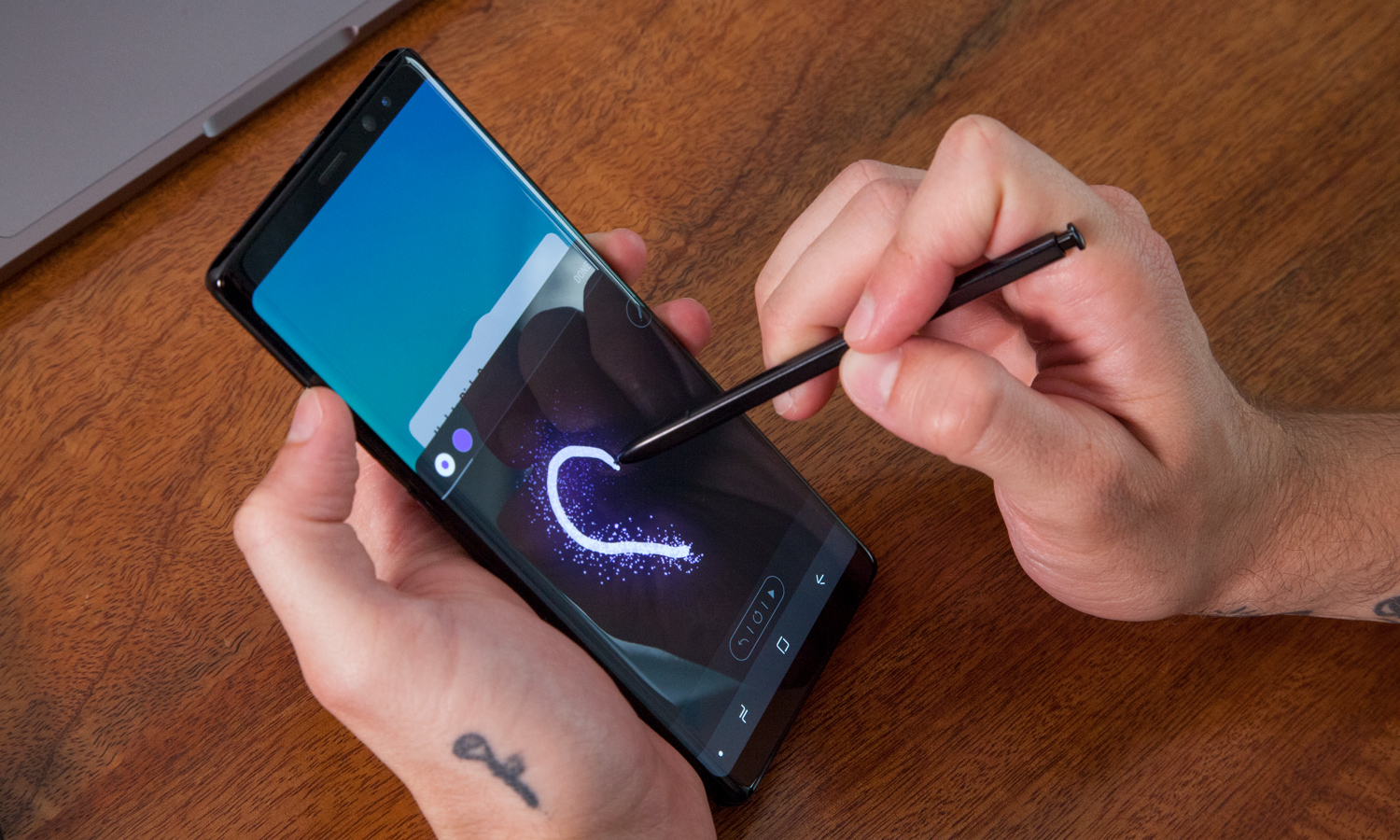
In addition, the Note 8 gives you three different ways to unlock the device, including a fingerprint sensor (though it’s on the back), iris scanning and facial recognition. With the iPhone 8 Plus, you get just Touch ID up front.
Another great feature for the Note 8 is App Pair, which lets you open two apps side by side with a single tap. The iPhone 8 Plus lacks this kind of multitasking.

The iPhone 8 Plus does have some special features of its own, including support for a new wave of augmented reality apps. There’s everything from IKEA for placing virtual furniture in your room and an app that lets you learn about the heart with a 3D human standing right in front of you, to 3D strategy games like The Machines. The Note 8 will eventually get compelling AR apps via Google’s ARCore technology, but they’re not here yet.
Winner: Galaxy Note 8
Battery Life
This round is basically a wash, as both phones turned in great endurance. On the Tom’s Guide Battery Test, which involves continuous web surfing over LTE, the Note 8 lasted a very good 11 hours and 11 minutes. That’s just 5 minutes shorter than the iPhone 8 Plus. In fact, both phablets made our list of longest lasting phones, well surpassing the 9:40 average.
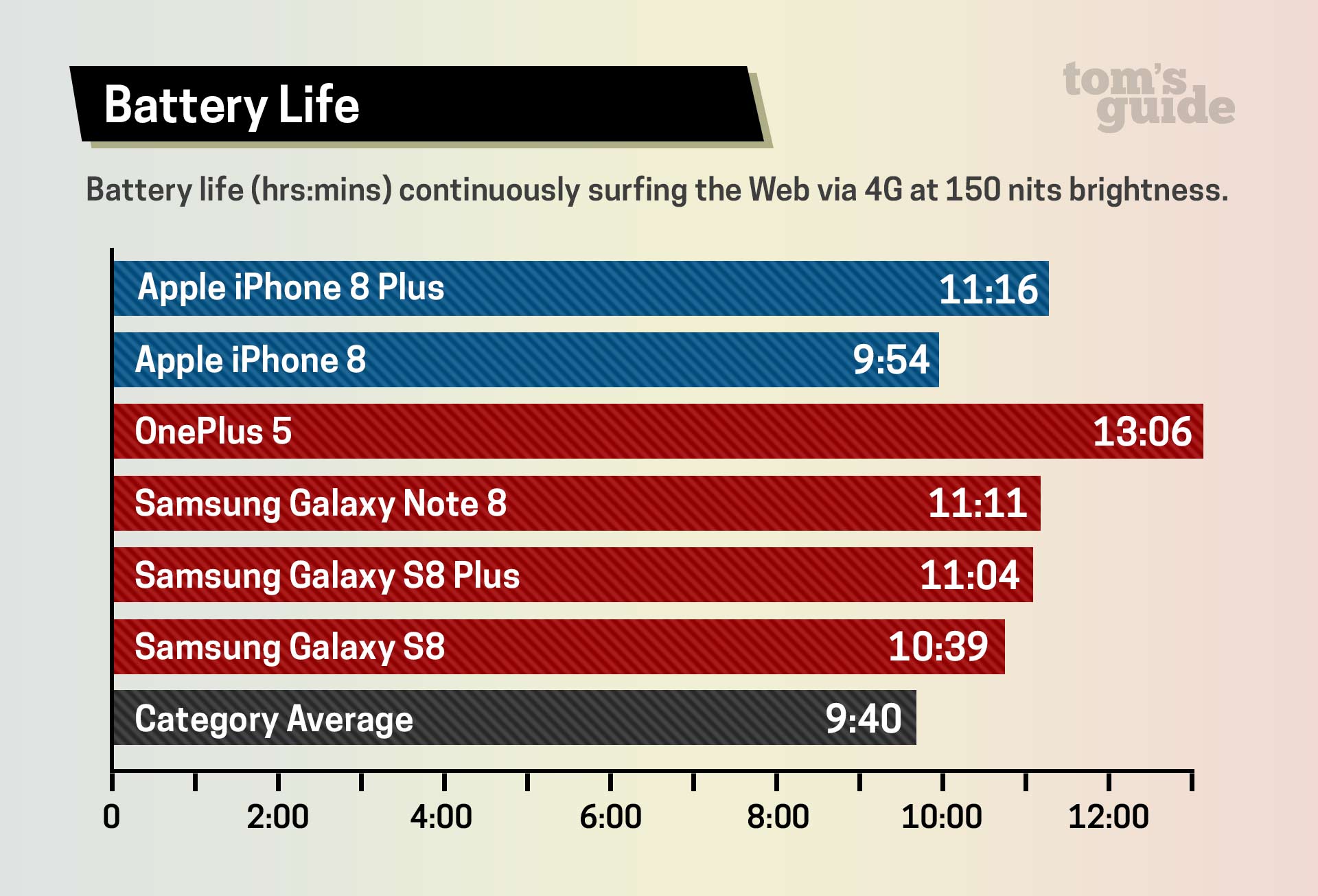
Value
At anywhere from $930 to $960, the Note 8 costs at least $130 more than the iPhone 8 Plus, which starts at $799. In fact, you could get the iPhone 8 Plus with 256GB of internal memory for $949, which is in the same ballpark as the Note 8 with just 64GB of storage.
Samsung doesn’t offer a 256GB option. To be fair, you could get a 256GB card for the Note 8, but those run $129 to $149 extra.
Winner: iPhone 8 Plus
Overall Winner: Galaxy Note 8
| Row 0 - Cell 0 | iPhone 8 Plus | Galaxy Note 8 |
| Design | Row 1 - Cell 1 | ✓ |
| Display | Row 2 - Cell 1 | ✓ |
| Performance | ✓ | Row 3 - Cell 2 |
| Cameras | ✓ | Row 4 - Cell 2 |
| Special Features | Row 5 - Cell 1 | ✓ |
| Battery Life | ✓ | ✓ |
| Value | ✓ | Row 7 - Cell 2 |
If you look at our scorecard, the iPhone 8 Plus and Note 8 are technically tied at four rounds apiece with 3 wins each and 1 draw. But between these two big-screen phones, the Note 8 eeks out the victory because of its better design, crisper and more colorful display and more useful special features like the S Pen and split-screen multitasking.
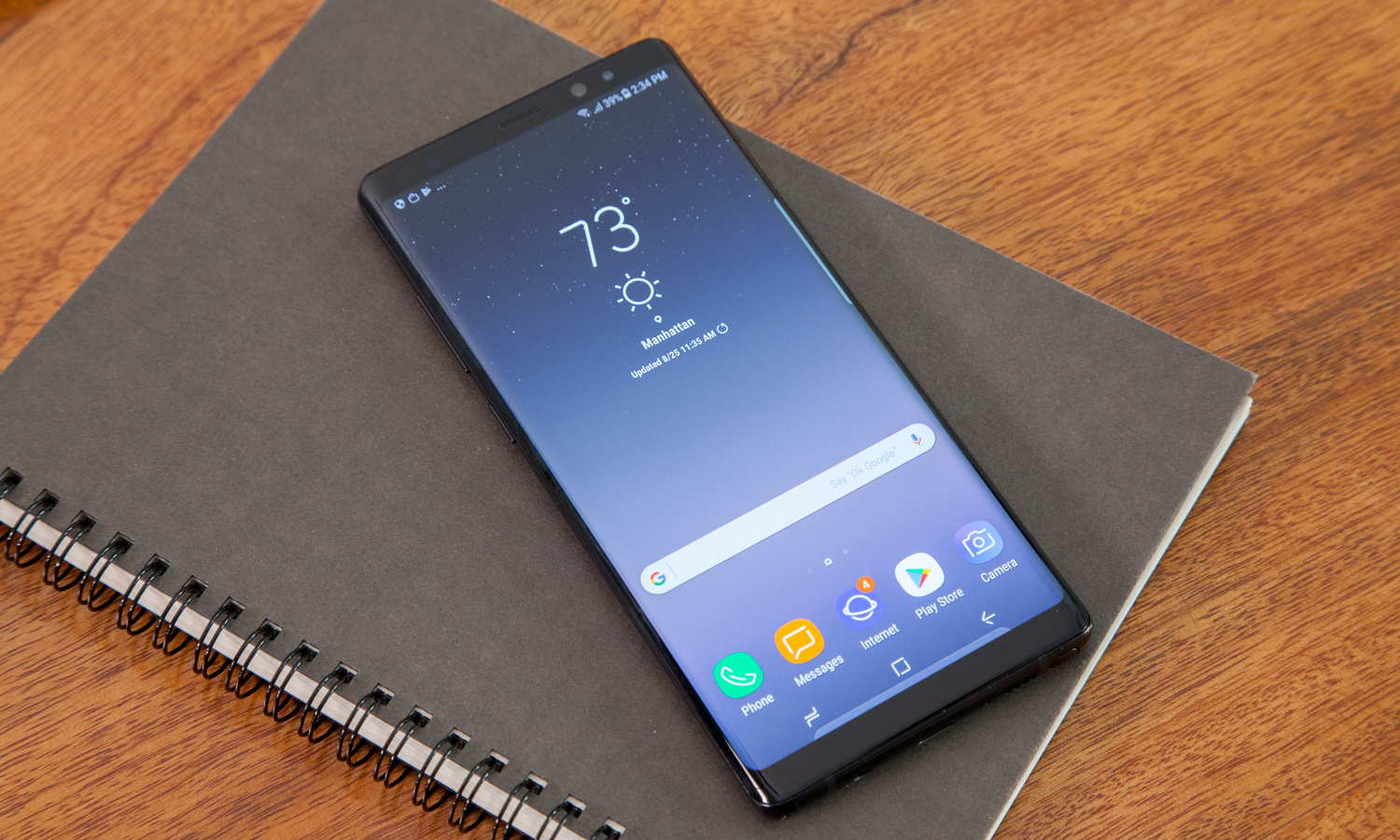
The iPhone 8 Plus also deserves your attention, though, because it offers superior dual cameras and considerably faster performance for less money. You can’t lose with either phablet, but we give a very slight edge to the Note 8 in this contest.
Credit: Shaun Lucas/Tom's Guide
Mark Spoonauer is the global editor in chief of Tom's Guide and has covered technology for over 20 years. In addition to overseeing the direction of Tom's Guide, Mark specializes in covering all things mobile, having reviewed dozens of smartphones and other gadgets. He has spoken at key industry events and appears regularly on TV to discuss the latest trends, including Cheddar, Fox Business and other outlets. Mark was previously editor in chief of Laptop Mag, and his work has appeared in Wired, Popular Science and Inc. Follow him on Twitter at @mspoonauer.
-
henrytcasey Reply20209422 said:Makes no jokes please. Note 8 should compare with iPhone X not iPhone 8!
We've got two comparisons of those phones, and we'll do more once the X comes in!
https://www.tomsguide.com/us/pictures-story/1278-note-8-beats-iphone-x.html
https://www.tomsguide.com/us/pictures-story/1282-iphone-x-beats-galaxy-note-8.html
-
dlavizzo "Why the Note 8 is better!"Reply
**iphone wins in almost every category plus is cheaper**
"So there you have it. But a Note 8!" -
itsallaboutafnan i am a samsung user since 4-5 years and very satisfied with it, now when we come to android vs iphone fight, i think companies should understand now that now iphone is not about phone anymore it has reached to a level of status for people, 100 feaures vs 0 features n still iphone users will buy it coz its a iphone, its like people will always prefer rolex over any other watch as it in different class .Reply -
mpstan01 I'm looking to upgrade my Note 4; trying to decide between Note 8, which appears slightly unwieldly, and an 8 Plus or even iPhone X. I'm pretty immersed in Google, so if I went iOS I'd strip as much as I could and work mostly in a Google ecosystem. Love the size and speed of the iPhones; love the company and service. Very little discussion on iPhone users that mostly use Google Apps. Thoughts anyone??Reply -
Rataan He didn't mention some of the best features of the iPhone. First, you get frequent and timely OS updates. Only Google branded phones are comparable on this critical point. Samsung phones get updates slow and late. Even older iPhones continue to get updates, increasing their potential longevity and value. Second, the absence of bloatware. The Samsung skin is pointless now that stock Android is so good, and Samsung phones are notorious for the presence of pointless gadgets and bloatware. Last but not least, the app experience is generally better on iPhone, with the possible exception of hardware utilities where Android seems to have the edge.Reply -
aventadorxs Reply20213126 said:I'm looking to upgrade my Note 4; trying to decide between Note 8, which appears slightly unwieldly, and an 8 Plus or even iPhone X. I'm pretty immersed in Google, so if I went iOS I'd strip as much as I could and work mostly in a Google ecosystem. Love the size and speed of the iPhones; love the company and service. Very little discussion on iPhone users that mostly use Google Apps. Thoughts anyone??
I'm in the same boat as you buddy. Been a Note 4 user for over 2 years now partly due to the Note 7 disaster and I'm also looking at the Note 8, iPhone 8 Plus, and iPhone X as my next device. I'm not as deeply ingrained in Google as others, but I still depend on Google a fair amount. My take on the whole situation would be to find out what you are definitely tied to (Gmail, Photos, etc.) and hold on to those, while playing around with Apple services that you may find more desirable than Google's offering (i.e. Apple Music would be a good example for me). -
thanhtat76 Someone said about the apple timely ioS update as a possitive, for me it is a negative. From my experience, apple often release a software update when they have new phone coming out, but this new update always do more ham than good for the old iphone. I think there is going on here because after upgrading, my iphone would drain the batery faster, run slower and some other issues, to the point i started thinking of buying the new iphone altogether. And it not happenned once...My advice is, if your iphone still working normal, dont be tempted to upgrade to the new iOS. At the end of the day, most of the advertised features in the new iOS you will not use it or see it but one thing it does for sure, making you buy a new phone again...Reply

